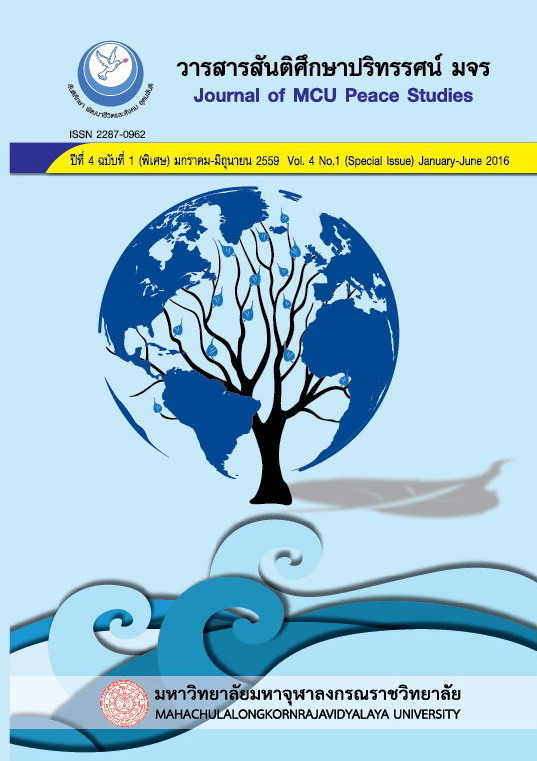A Study of the Buddha’s Use of the Anusasani-Patihariya (Miracle of Teaching) for the Propagation of Buddhism in Buddhist Scriptures
Main Article Content
บทคัดย่อ
The objectives of thesis were: (1) to study the Miracle of Teaching, (2) to study the Buddha’s propagation of Buddhism in the Buddhism scriptures, and (3) to study an integration the Miracle of Teaching to the propagation of Buddhism in the modern world.
Result of the study are : AnusāsanĪ-Pātihāriya of Buddha consists of reasons. He had the grace to desire the success to his followers as the greatest goal of life. He had repeated teaching the apperception in each gesture for practice and living with precaution to his followers. Always keeping in mind of the good deeds only in order to find out the Trinity’s practice of Four of Great conscious. The first is to behave as appropriate. Buddha used to teach people how miraculous AnusĀsanī most and the best results. Buddha believed in his words that people can confidence to change life, people can accept new values, and people can seek a new target.
The principles and methods of propagation are universal, useful material, importance both in terms of theoretical rationality and a method that is universally suitable for all ages. The practice has taken a middle path. It can be applied in accordance with the lifestyle for the peace and prosperity of the self and society.
Integrating the Anusasni miracle for the propagation of Buddhism, the Buddha in the world today that scientists have believed that all things in the universe are conducted rationally. There are certain rules and regulations. The Buddha taught that you do not believe just because a rumor. The book claims ideally because it assumes that because I think searched along reason. The match their theories and the picture looks unsightly and do not believe just because you are our teachers.
Article Details
ทัศนะและความคิดเห็นที่ปรากฏในบทความในวารสาร ถือเป็นความรับผิดชอบของผู้เขียนบทความนั้น และไม่ถือเป็นทัศนะและความรับผิดชอบของกองบรรณาธิการ ยินยอมว่าบทความเป็นลิขสิทธิ์ของวารสาร


